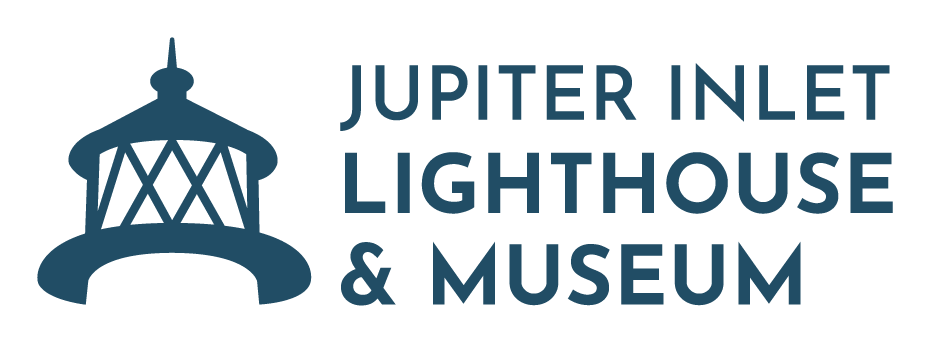Jupiter Inlet Lighthouse History
In 1853, Congress authorized the building of a lighthouse near Jupiter Inlet. The federal government designated a 61.5-acre lighthouse reservation the following year. However, a survey from the 1920s, discovered that the reservation actually comprised 122 acres.
Jupiter was one of six Florida lighthouse projects assigned to Lieutenant George Gordon Meade of the U.S. Army Corps of Topographic Engineers. A decade later, he would famously defeat Robert E. Lee at the Battle of Gettysburg as a Major General in the Union Army. Meade selected the site and created the original design for the Jupiter Inlet Lighthouse. His successor, Lieutenant William F. Raynolds, improved on the final design by adding height and a double wall. Edward A. Yorke, a civilian, oversaw construction of the light station in 1859 and 1860.
Jupiter Inlet Lighthouse Construction
Soon after the lighthouse was authorized, engineers discovered that a storm had closed the inlet. The inside waters became stagnant, breeding malaria. All construction materials would have to be brought down the Indian River in small, shallow-draft barges from the nearest inlet near Fort Pierce.
The first work crew was sent in late 1855 but had to immediately return home due to the outbreak of the Third Seminole War. Work finally got underway in January 1859, but the climate and logistical difficulties caused construction to proceed slowly. Work was temporarily halted that summer with the lighthouse far from complete.
Construction resumed in January 1860. The majority of work on the 108-foot lighthouse, adjacent oil house, and keepers’ house were completed in five months. The tower was officially lighted on July 10, 1860.
The Civil War
After the onset of the American Civil War, assistant keeper Augustus Lang and other local Confederate sympathizers disabled the light, which remained dark throughout the war. The inlet reopened naturally in 1862, allowing it to be used by Confederate blockade runners operating between Florida and the Bahamas. Union gunboats patrolled offshore and sent rowed cutters into the Indian River.
Jupiter Inlet Lighthouse was relighted on June 28, 1866. It has remained an active aid to navigation ever since. James Armour, who had helped the Union Navy recover parts and supplies removed from the lighthouse during the war, was one of the new keepers. In 1869, he was promoted to Head Keeper. Armour did not retire until 1906 – a remarkable 40 years of service as our lighthouse keeper. Captain Armour’s Way is named in his honor.
The Lighthouse Keepers
From 1860 to 1939, more than 70 different lighthouse keepers served for varying lengths of time at the Jupiter Inlet Lighthouse. Three keepers served at one time and were responsible for the operation and upkeep of the lighthouse and site. Most important among these duties was fueling the lighthouse’s lamp with oil, winding the mechanism that turned the lens, and keeping watch through the night.
In 1939, the civilian Lighthouse Service merged with the US Coast Guard. Keeper Charles Seabrook and his assistants chose to enlist in the Coast Guard. Military personnel remained keepers of the lighthouse until its full automation in 1987.
More details about the lighthouse and light station are available here. There is also a timeline of the lighthouse’s history.
The Lighthouse Today
In 2008, the Jupiter Lighthouse Reservation was Congressionally-designated Jupiter Inlet Lighthouse Outstanding Natural Area. Ownership of the lighthouse and former Coast Guard station was transferred to the Bureau of Land Management in 2019. The historic Fresnel lens is still owned by the Coast Guard. The lighthouse remains an active public Aid to Navigation, with 1 of only 13 active First-Order Fresnel lenses in the entire United States. The non-profit Loxahatchee River Historical Society (LRHS) first opened a lighthouse museum on site in 1973. Since 1994, LRHS has served as the modern keepers of the Jupiter Light through a formal agreement to restore and preserve the lighthouse, and to provide visitor access and historical interpretation.

The Jupiter Inlet Lighthouse & Museum is operated by the Loxahatchee River Historical Society, managing partner in the Jupiter Inlet Lighthouse Outstanding Natural Area.
Sign Up For Our Email Newsletter
© Jupiter Inlet Lighthouse & Museum | 500 Captain Armour's Way, Jupiter, FL 33469
